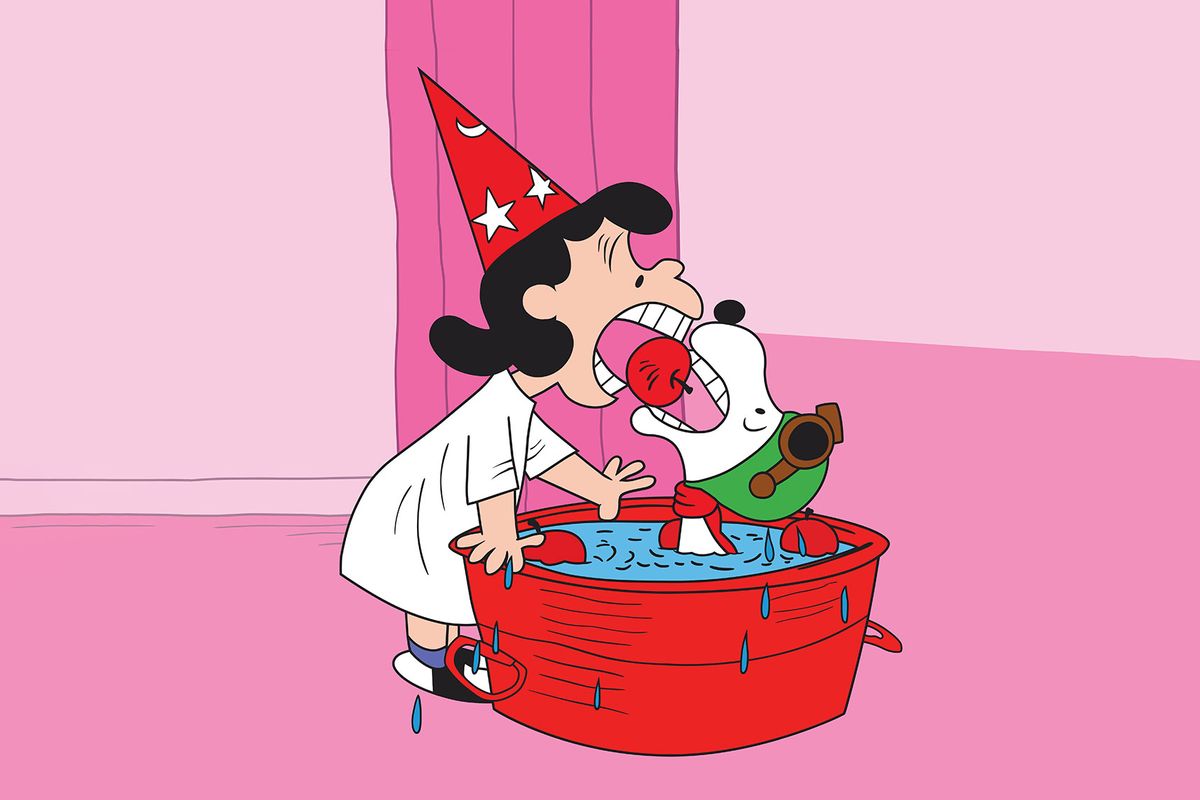As a child, I was more easily pulled into the world of literature than film. My summers were spent oscillating between New Jersey beaches and the blast-chilled alcoves of my local library, reading about tornadoes, Greek mythology and Count Olaf. But along with these cherished readings was an equally canonical set of movies. “Peanuts” holiday specials, adapted from Charles M. Schulz's beloved comic strip, were a formative fixture of my childhood that paired sweetly and synchronously with my love of books. Intellectual curiosity, emotional complexity, lingering questions about spirituality and unadulterated whimsy ballasted the world of Charlie Brown and his gang.
Watching “Peanuts,” even as a kid, was like playing a game of cerebral hopscotch. You started any of the films thinking you were simply engaging in a lighthearted holiday tradition, but soon enough, your mind would snag on a scene or a line, and you’d become totally enraptured. Bleary-eyed and punch-drunk on pumpkin pie and chocolate, you’d continue watching, only to return to that same scene or line later on in your mind, struggling to articulate your thoughts and feelings about it.
For me, at least, watching the films still conjures the same level of emotional depth that it did in the late ‘90s and early aughts.
Kids watching “The Great Pumpkin” at or around the time it originally aired . . . would have, in all likelihood, been able to recognize the reference to a Sopwith Camel.
“Peanuts” — and specifically the 1966 Halloween television special, “It’s the Great Pumpkin, Charlie Brown” — has always teetered on the brink of magical realism. Wholly devoid of adults and imbued with quasi-mythical elements, “Peanuts” always seemed one step away from pitching itself into being a total anomaly, as far as children’s films are concerned. Linus van Pelt’s blind faith that the Great Pumpkin will rise from the “most sincere” of pumpkin patches; the mystery behind Charlie Brown’s receiving rocks in his trick-or-treat bag, unlike his friends who get candy, gum and popcorn balls; Lucy using the back of Charlie Brown’s head to model the design for a jack-o-lantern.
The sequence that perhaps best encapsulates this quality though is Snoopy as the World War I Flying Ace, and his battle with the Red Baron, aka, Manfred von Richthofen, a German fighter pilot and aristocrat who downed 80 Allied planes between 1916 and 1918.
“His mission is to find the Red Baron and shoot him down,” narrates Charlie Brown, as Snoopy, donning a red scarf, aviator hat and goggles, clambers into the cockpit of his dog house-turned single-seat Sopwith Camel. He soars into flight, his bright white fur set against an orange sky. The plane’s propeller whirs, and Snoopy’s head swings around, up and down, scanning for any sign of his German foe. Suddenly, the clouds darken, and Snoopy, with gritted teeth and a raised fist, lets his plane nosedive as he sprays rounds of invisible gunfire at the Red Baron, who is deftly maneuvering around him. The Red Baron takes his shot, peppering the side of Snoopy’s dogfighter with bullets. The Sopwith Camel sputters and smokes, before crashing to the ground near Snoopy’s blue water bowl.
Charlie Brown’s stilted voice returns to tell us, “Here’s the World War I Flying Ace imagining he’s down behind enemy lines.” Snoopy slinks on all fours across a shadowy tree-lined road, made pink by the fiery red setting sun. A sign that looks more like a tombstone indicates that he crashed about 70 kilometers from the city of Chȃlons-sur-marne. As Snoopy continues making his way across the French countryside, navigating barbed trenches and the occasional skirmish, a portentous tune plays, set against a violet-bruised sky. He takes a moment of respite on top of a heaped hay bale before continuing on his journey, eventually reaching a ramshackle farmhouse where the Peanuts’ Halloween party is taking place.
Snoopy, along with his sensationally wild imagination, reminds us that Halloween is a day to indulge our own fantasies.
But though Snoopy’s green-goggled flight continues to charm audiences year after year, it’s worth noting the glaring temporal dissonance between those watching amid the countercultural heyday of the ‘60s and ‘70s, for example, and modern-day viewers. Kids watching “The Great Pumpkin” at or around the time it originally aired would certainly have a more tenable grasp on, if not of the World Wars, the anti-triumphalism sentiment of post-war American literature and film. Certainly, many of them would have had parents and grandparents who fought in one or both of the World Wars and had a relatively close connection to a version of trauma that was at once intergenerational and global. They would have, in all likelihood, been able to recognize the reference to a Sopwith Camel, the same way I would be able to visualize what a Stealth Bomber looks like. It’s therefore much easier for a 25-year-old living in 2023 to romanticize the less technical, more individual plight of Snoopy as the WWI Flying Ace and his nemesis, the Red Baron, as a duel scene.
Nonetheless, no one can deny the undeniably iconic and enduring appeal of a dog clad in pilot gear, waggling his tongue at a formidable adversary and traipsing through bucolic, watercolor landscapes before bobbing for apples at a holiday party. At its core, Snoopy’s Flying Ace scene is impressive for its longevity and its mysticism. It’s remained an unblemished and shimmering cultural linchpin for nearly 60 years, without ever having to adapt or evolve to fit the demands of each new year’s zeitgeist. Snoopy, along with his sensationally wild imagination, reminds us that Halloween is a day to indulge our own fantasies and that pretending to be someone else, even if from a bygone era, can always find resonance with the present.
Read more
about this topic

Shares